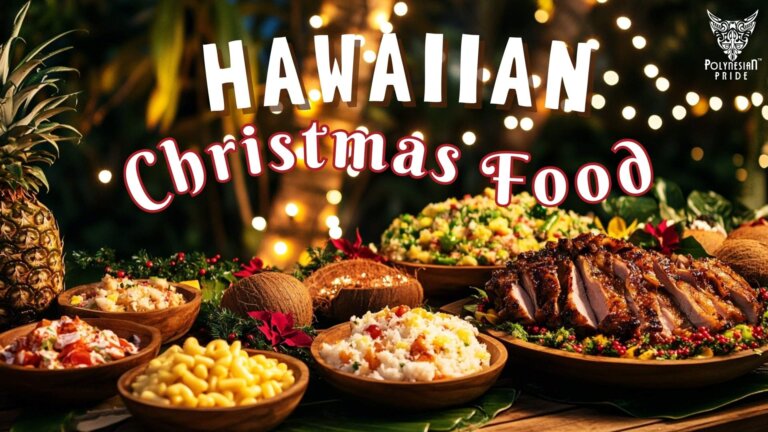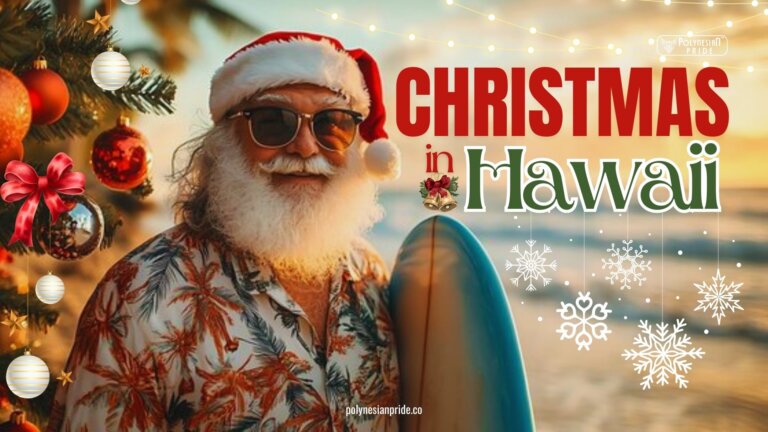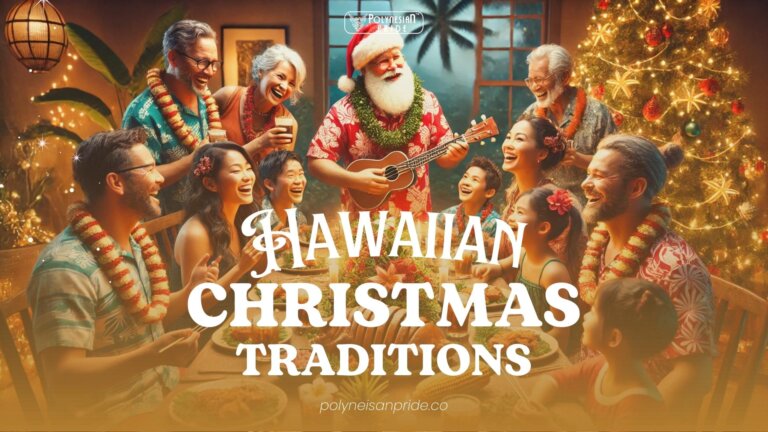Unveiling the Enduring Spirit: A Journey Through Maori Culture

Maori culture in New Zealand boasts a vibrant history, tradition, and resilience. The story of the Maori people is one of adaptation, creation, and a constant struggle to maintain their unique identity in a rapidly changing world. This article delves into the fascinating tapestry of Maori culture, exploring its ancient origins, deep connection to the land (whenua), and diverse expressions in the modern era.
I. Introduction
From the rugged peaks of the Southern Alps to the pristine shores of the Pacific, Maori culture has thrived for centuries. Rooted in a deep connection to the land, known as whenua in te reo Maori, their traditions reflect a profound understanding of the natural world and its intricate balance. Through their language, customs, art, and storytelling, the Maori have passed down a rich legacy that continues to inspire and unite both Maori and non-Maori.
II. The Origins and History of Maori Culture

A. Early Polynesian Settlement (1300 AD – 1769 AD)
The Maori people’s origin can be traced back to the Polynesian voyagers who braved the vast Pacific Ocean centuries ago, likely arriving in New Zealand in multiple waves between 1200 and 1300 AD. These voyagers brought a rich cultural heritage that would be adapted and developed in the unique environment of Aotearoa, the Maori name for New Zealand.
Skilled navigators reached New Zealand by utilizing the stars, wind patterns, and their deep understanding of the ocean currents. Once settled, the Maori developed a complex social structure with distinct hapū (subtribes) and iwi (tribes) led by chiefs. Their ingenuity and adaptability were evident in developing sophisticated fishing techniques, agricultural practices suited to the land, and a rich artistic tradition.
B. European Arrival and Colonization (1769 AD – 1840 AD)
The arrival of European explorers and settlers in the late 18th and early 19th centuries marked a significant turning point for the Maori people. While interactions with some early European explorers, such as James Cook in 1769, were relatively peaceful, the influx of settlers in the early 19th century led to conflicts over land and resources. This period, known as the Musket Wars, saw the introduction of firearms that disrupted traditional warfare and caused significant social upheaval.
C. The Treaty of Waitangi (1840 AD)

The Treaty of Waitangi was signed in 1840 in an attempt to establish a framework for coexistence between the Maori and the British Crown. This historic agreement aimed to protect Maori rights to their lands, forests, and fisheries and establish a partnership between the two peoples. Over 500 Maori chiefs and representatives of the British Crown signed the treaty.
However, the treaty’s text was open to interpretation, and the British government often needed to uphold its commitments. This led to ongoing tensions and conflicts between the Maori and the British and the erosion of Maori rights and land ownership.
The Treaty of Waitangi remains a significant document in New Zealand’s history, and its principles continue to be debated and interpreted today. The New Zealand government has established several mechanisms to address historical grievances and to promote reconciliation between Maori and Pākehā (New Zealanders of European descent).
III. Core Aspects of Maori Culture
A. Te Reo Māori (Maori Language)
Te Reo Māori, the Maori language, is a fundamental aspect of Maori identity and culture. It is a rich and melodic tongue that carries within it the wisdom, traditions, and worldview of the Maori people. Despite facing the threat of extinction during the colonial era, efforts to revitalize and preserve te reo Maori have been ongoing, with increasing recognition of its importance in schools, media, and everyday life.

B. Traditional Practices and Beliefs
At the heart of Maori culture lies a deep connection to the natural world and a profound respect for the spiritual realm. Traditional beliefs revolve around whakapapa, encompassing genealogical ties, ancestry, and the interconnectedness of all living beings. This interconnectedness is reflected in various practices, including whakatapuhi (genealogical recitation) where ancestral lines are chanted to connect to the past.
Rituals and ceremonies, such as powhiri (traditional welcome ceremony) and hui (gatherings), also play a vital role in preserving and passing down these beliefs and practices. Karakia (chants) are often performed at these gatherings to invoke blessings or seek guidance from the spiritual realm.

C. The Haka: Understanding the cultural significance of the Maori war dance
The haka is an influential and iconic expression of Maori culture, deeply rooted in their warrior traditions. This traditional war dance, performed with rhythmic chanting, foot-stamping, and vigorous body movements, serves various purposes, including:
- Expressing pride, strength, and unity
- Welcoming guests and honoring important occasions
- Intimidating opponents in battle or sports competitions
The haka is not just a performance; it is a sacred ritual that embodies the spirit and mana (prestige) of the Maori people.

D. Arts and Crafts
The Maori people are renowned for their exceptional artistic abilities, deeply intertwined with their cultural traditions and beliefs. These arts and crafts include:
- Intricate wood carving (kālai laau) and its cultural significance
Maori wood carving is a highly revered art form that adorns meeting houses (wharenui), canoes, and other cultural artifacts. The intricate designs and motifs, often carved using tools like toki (adzes), represent ancestral narratives, beliefs, and the interconnectedness of all living beings.

- Weaving (lau hala & kapa) and the stories woven into the designs
Maori weaving is a sacred practice that involves creating beautiful and functional items from natural materials such as flax and plant fibers. The patterns and designs woven into these items often hold deep symbolic meaning, representing stories, genealogies, and cultural values.

- The art of lei making (lei pāwehi) and its use in celebrations
Lei making is an integral part of Maori culture, with intricate leis crafted from flowers, leaves, and shells. These leis are not merely decorative; they hold spiritual significance and are used in various ceremonies and celebrations, symbolizing respect, welcome, and the beauty of the natural world.

- The Enduring Art of Tā Moko: Unveiling the Significance of Maori Tattoos
Maori tattooing, known as tā moko, is a highly revered art form with deep cultural and spiritual significance. These intricate facial and body tattoos are imbued with ancestral narratives, personal histories, and spiritual connections. Receiving a tā moko is a sacred ritual that marks important life events and connects the individual to their cultural heritage.

E. The Marae: A Stage for Maori Oral Traditions
The Marae, a sacred Maori meeting ground, is a vital platform for keeping tribal histories alive through oral traditions. Unlike written records, Maori history is passed down through generations by word of mouth, emphasizing the importance of music, storytelling, and poetry.

Oral Performances on the Marae:
- Narratives, Songs, and Chants: These captivating forms of storytelling recount tribal histories, heroic deeds, and ancestral knowledge. They are often performed during ceremonies and gatherings, keeping traditions vibrant.
- Oratory and Whakatauki (Proverbs): The art of public speaking holds immense significance in Marae rituals, especially during encounters between groups. Skilled speakers weave traditional narratives and whakatauki (proverbs) into their speeches, adding depth and cultural resonance.
F. Traditional Maori Clothing: Materials, designs, and cultural meanings
Traditional Maori clothing, an essential part of New Zealand traditional clothing, was crafted from natural flax, bird feathers, and animal skins. These garments were functional, held symbolic meanings, and were adorned with intricate designs and motifs. Some examples include:

- Piupiu: Skirts made from woven flax, often worn by women during ceremonial occasions.
- Kakahu: Cloaks made from woven flax adorned with feathers and designs representing ancestral connections served as a mark of status and prestige.
- Korowai: These highly prized cloaks made from woven flax and feathers were worn by leaders and chiefs. They were considered a taonga (treasure) and embodied the wearer’s mana (prestige).
D. Maori Cuisine: Traditional foods and cooking methods
Maori cuisine is deeply rooted in the land and the sea’s bounty. Traditional foods include:
- Kūmara (sweet potato): A staple crop cultivated by the Maori for centuries.
- Hāngi: A traditional method of cooking food by burying it in underground earth ovens, often used for feasts and celebrations.
- Seafood: Fish, shellfish, and other marine resources were integral to the Maori diet.
- Native plants and berries: Various indigenous plants and berries were harvested and incorporated into Maori cuisine.

IV. Impact of Colonization: Changes and Challenges Faced by the Maori
The arrival of European settlers and the subsequent colonization of New Zealand profoundly impacted the Maori culture of New Zealand and its way of life. The Maori people faced numerous challenges as a result of colonization, including:
- Land dispossession: The confiscation of Maori lands by the colonial government led to displacement, loss of traditional resources, and a deep sense of injustice.
- Assimilation policies: Efforts to assimilate the Maori into European culture, including suppressing te reo Maori (the Māori language) and traditional practices, threatened the essence of Maori identity.
- Urbanization: Migrating Maori people from rural areas to urban centers disrupted traditional community structures, cultural practices, and access to ancestral lands.
- Health disparities: The introduction of new diseases and lifestyle changes led to significant health challenges for the Maori population, with inequalities in life expectancy, infant mortality, and access to healthcare persisting to this day.
Despite these challenges, the Maori people have demonstrated remarkable resilience and determination to preserve their culture, language, and traditions. In recent decades, there has been a significant renaissance of Maori culture customs and traditions, with efforts in education, media, and community initiatives revitalizing te reo Maori, promoting traditional arts and practices, and asserting Maori values and perspectives in various aspects of New Zealand society.
V. Contemporary Maori Culture
A. Maori Culture in Modern New Zealand
In contemporary New Zealand, Maori culture has undergone a remarkable renaissance. The Māori language, once on the brink of extinction, has experienced a revitalization through efforts in education, media, and community initiatives. Traditional arts and practices, such as wood carving, weaving, and the haka, have gained widespread recognition and appreciation.
Maori values and perspectives have also increasingly influenced various aspects of New Zealand society, including politics, education, and environmental conservation. The principles of kaitiakitanga (guardianship) and manaakitanga (hospitality) are now integral to national policies and practices, reflecting a growing recognition of the importance of Maori knowledge and perspectives.
B. Maori Representation in Media and Arts
In recent years, there has been a significant increase in the representation of Maori culture in mainstream media and the arts. Maori filmmakers, musicians, artists, and writers have gained international acclaim for their work, showcasing the richness and diversity of Maori storytelling and creativity.
Films such as “Once Were Warriors”, “Whale Rider”, and “The Piano” have brought Maori stories and experiences to global audiences, challenging stereotypes and highlighting the complexities of Maori identity. Similarly, Maori musicians like Moana Maniapoto, Stan Walker, and Six60 have achieved success both locally and internationally, blending traditional Maori sounds with contemporary music genres.

In the visual arts, Maori artists like Lisa Reihana, Shane Cotton, and Ralph Hotere have gained recognition for their innovative and thought-provoking works that explore themes of identity, history, and cultural heritage. These artists draw on traditional Maori art forms and narratives while pushing boundaries and engaging with contemporary issues. A notable example is Lisa Reihana’s “In Pursuit of Venus (Anakiwa)”, a large-scale digital artwork that reimagines European art history from a Maori perspective.
C. Maori Activism and Advocacy
Maori activism and advocacy have played a crucial role in raising awareness of indigenous rights, social justice, and environmental issues in New Zealand. Organizations such as the Māori Women’s Welfare League, Te Hau Tikanga (Maori Legal Service), and the Māori Language Commission have been at the forefront of advocating for Maori rights and promoting cultural revitalization.
Land rights, treaty settlements, and language revitalization efforts have been central concerns for Maori activists, who continue to push for greater recognition and protection of Maori rights and interests. The hikoi (protest march) has become a powerful symbol of Maori resistance and resilience, drawing attention to land confiscation, resource management, and social inequality.
Despite the progress in revitalizing and promoting Maori culture, challenges still must be addressed. Maori communities continue to face disparities in health, education, and employment. Ongoing activism and advocacy are crucial to address these issues and ensure that Maori culture thrives in New Zealand society.
VI. Interesting Facts About Maori Culture
- Polynesian Origins: Maori people are descendants of Polynesian navigators who arrived in New Zealand around 1200-1300 AD.
- Haka Dance: The haka is a mighty war dance famous worldwide, mainly performed by the New Zealand All Blacks rugby team.
- Te Reo Māori: Te Reo Māori, the Māori language, is one of New Zealand’s official languages, is experiencing a revival.
- Whakapapa: Genealogy (whakapapa) is crucial in Maori culture, linking people to their ancestors and the land.
- Tā Moko Tattoos: Traditional Maori tattoos, known as tā moko, tell a person’s life story and tribal affiliations.
- Marae: A marae is a communal meeting ground central to Maori community life and ceremonies.
- Hāngi Cooking: Traditional Maori cooking involves cooking food in an underground oven called a hāngi.
- Environmental Guardians: Kaitiakitanga is the Maori principle of environmental guardianship, emphasizing natural resource protection and sustainable management.
- Treaty of Waitangi: Signed in 1840, this treaty is foundational in New Zealand’s history, establishing the relationship between Maori and the British Crown.
- Art and Carving: Maoris are renowned for their intricate wood carvings and weaving, which often depict ancestral stories and symbols.
VII. Conclusion
In conclusion, Maori culture New Zealand is a vibrant tapestry woven from tradition, spirituality, and a deep connection to the land. Despite facing historical challenges, the Maori people have persevered, revitalizing their language, arts, and values. Maori culture continues to enrich Aotearoa, New Zealand, offering valuable lessons in environmental stewardship, community, and heritage. As we move forward, embracing Maori values and fostering understanding can create a more inclusive and harmonious future. Noho ora mai, kia kaha, kia maia, kia manawanui. (Stay well, be strong, be brave, be steadfast.)
Frequently Asked Questions
Are Māori Polynesian?
Yes, the Māori are Polynesian. They are descendants of Polynesian voyagers who traveled across the Pacific Ocean and arrived in New Zealand in multiple waves between 1200 and 1300 AD. These early settlers brought with them a rich cultural heritage that has been adapted and developed in the unique environment of Aotearoa, the Māori name for New Zealand.
Does the Maori culture still exist?
It originated from, and is still part of, Eastern Polynesian culture. Māori culture forms a distinctive part of New Zealand culture and, due to a large diaspora and the incorporation of Māori motifs into popular culture, it is found throughout the world.
What is the most common Māori food?
Important foods included whitebait, the seaweed karengo, huhu grubs, pikopiko (fern shoots), karaka berries and toroi – a dish of fresh mussels with pūhā (sow thistle) juice.
What is the Māori tribe famous for?
Māori people are known as the greatest storytellers because they didn’t have a written language until colonization in the 1800’s. Their language existed and evolved for centuries and was passed down orally by songs and stories. That’s why you might find a lot of talented storytellers among Māori people.
Who are the 7 Māori tribes?
Finally, in 1350 CE a ‘great fleet’ of seven canoes – Aotea, Kurahaupō, Mataatua, Tainui, Tokomaru, Te Arawa and Tākitimu – all departed from the Tahitian region at the same time, bringing the people now known as Māori to New Zealand. These were advanced, warlike, agricultural tribes who destroyed the Moriori.

As an arts and traditional crafts specialist rooted in pe‘a (Samoan tatau), kapa making, and ceremonial carving, I’ve nearly 10 years of experience in fine art and its cultural significance. Experience the beauty of the traditional art of tattooing through my latest publication.
Inspire Your Style
Contact me:
Email: [email protected]
Tel: +685 77 23699






